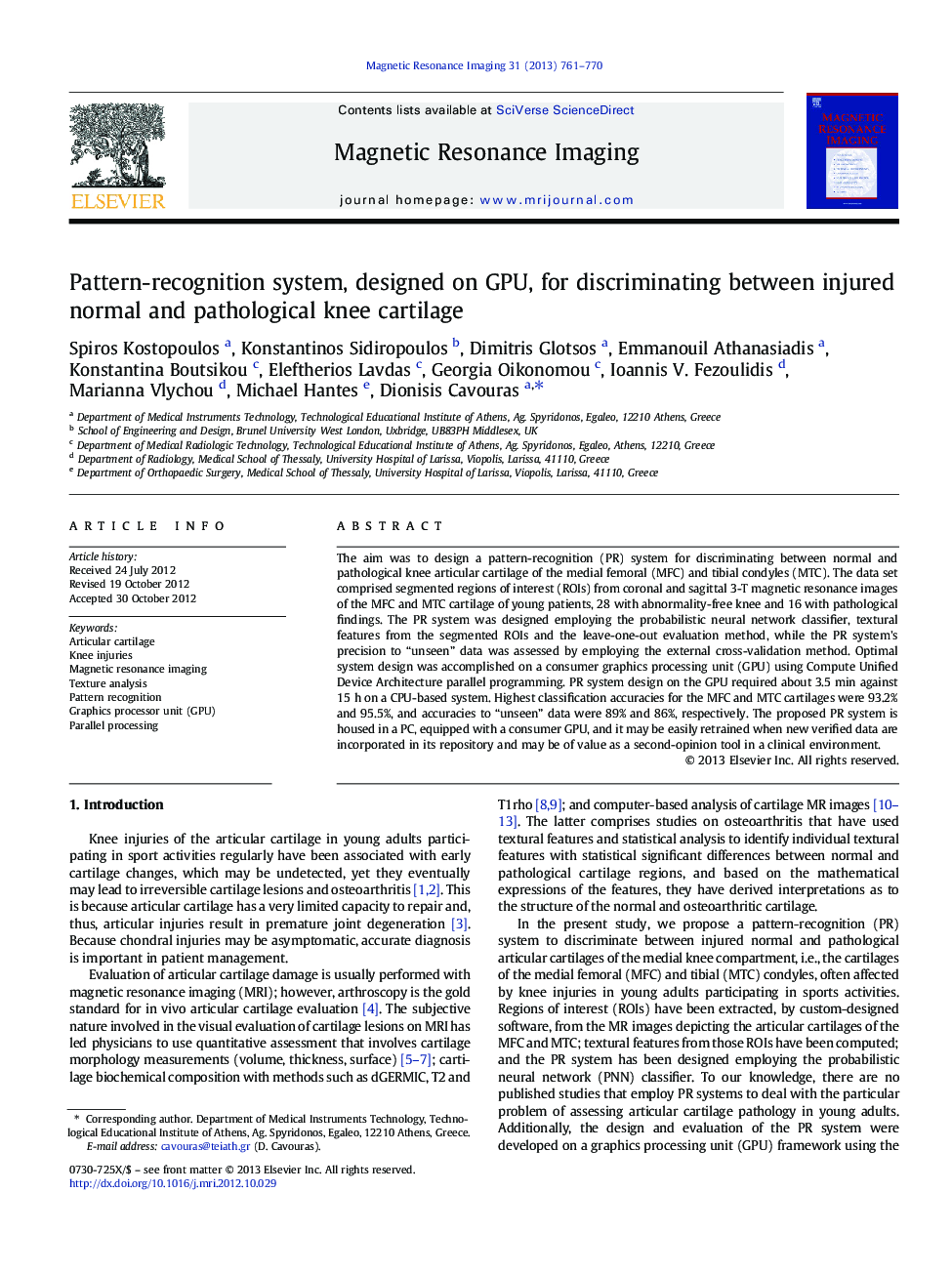| Article ID | Journal | Published Year | Pages | File Type |
|---|---|---|---|---|
| 1806508 | Magnetic Resonance Imaging | 2013 | 10 Pages |
The aim was to design a pattern-recognition (PR) system for discriminating between normal and pathological knee articular cartilage of the medial femoral (MFC) and tibial condyles (MTC). The data set comprised segmented regions of interest (ROIs) from coronal and sagittal 3-T magnetic resonance images of the MFC and MTC cartilage of young patients, 28 with abnormality-free knee and 16 with pathological findings. The PR system was designed employing the probabilistic neural network classifier, textural features from the segmented ROIs and the leave-one-out evaluation method, while the PR system's precision to “unseen” data was assessed by employing the external cross-validation method. Optimal system design was accomplished on a consumer graphics processing unit (GPU) using Compute Unified Device Architecture parallel programming. PR system design on the GPU required about 3.5 min against 15 h on a CPU-based system. Highest classification accuracies for the MFC and MTC cartilages were 93.2% and 95.5%, and accuracies to “unseen” data were 89% and 86%, respectively. The proposed PR system is housed in a PC, equipped with a consumer GPU, and it may be easily retrained when new verified data are incorporated in its repository and may be of value as a second-opinion tool in a clinical environment.
